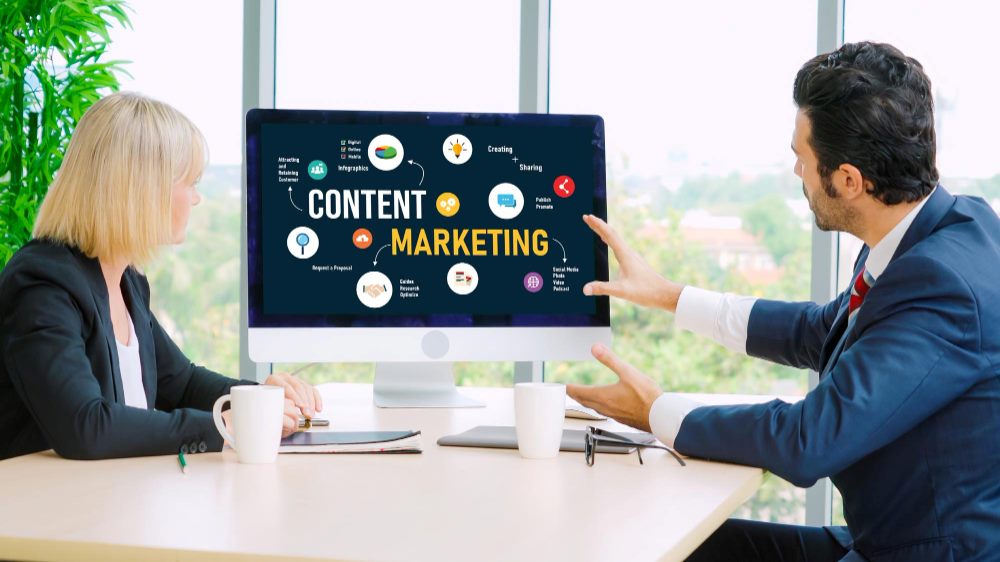The boom in digital marketing methods is driving up competitiveness in the fast-paced world of B2B content marketing. The data paints a clear picture: according to recent figures, 70% of B2B marketers are actively engaging in content marketing.
It’s no surprise that as organizations grasp the critical role content plays in reaching their target audience, the competition to generate captivating and effective content is heating up.
Let’s explore the key factors driving this heightened competition.
The Evolution of B2B Content Marketing
The B2B content marketing landscape is constantly evolving. In the past, businesses could gain a competitive edge by simply producing content on a regular basis. However, as more companies embrace content marketing, the bar has been raised. Today, it’s not just about producing content; it’s about producing exceptional content.
The increased adoption of content marketing by B2B companies has led to a saturation of content in the digital space. This saturation makes it more challenging for businesses to stand out. To succeed in this environment, companies must be more strategic and innovative in their approach.
Demand for Quality Content
As the number of content pieces multiplies, so does the demand for quality. In an age where information is readily available, B2B buyers are becoming more discerning. They seek content that not only informs but also engages and adds value to their decision-making process.
B2B buyers are looking for in-depth, well-researched, and insightful content. This shift in expectations means that businesses need to invest in high-quality content creation and distribution to remain competitive.
SEO Battle in B2B Content Marketing
Search engines play a pivotal role in content discovery. In the B2B realm, ranking on the first page of search engine results is a coveted achievement. With more companies vying for these top spots, the competition for keywords and rankings has intensified.
The top positions in search results are limited, but the number of businesses competing for them is ever-increasing. This has led to more intense keyword competition and a need for a solid SEO strategy to secure those valuable organic search positions.
Social Media Frenzy
Social media platforms are integral to content distribution. B2B companies are leveraging platforms like LinkedIn, Twitter, and even Instagram to share their content and connect with their audience. This has given rise to a new dimension of competition on social media.
B2B businesses are not just competing for followers and engagement; they are also competing for visibility in social media feeds. The challenge lies in creating content that captures the attention of an increasingly busy and discerning social media audience.
Diverse Content Formats
The traditional blog post is no longer the sole format for B2B content marketing. Infographics, videos, podcasts, and interactive content are gaining popularity. This diversification has opened up new avenues for competition.
Different content formats require distinct skills and resources. B2B companies are now not only competing in the realm of written content but also in visual and audio content. Adapting to and excelling in these new formats is a challenge in itself.
Conclusion
In a world where content is everything, B2B content marketing has emerged as a dynamic and fiercely competitive arena. The factors driving this competition, from the evolution of content marketing to the influence of search engines and social media, are reshaping the way businesses approach their content strategies.
Thriving in this competitive environment necessitates a commitment to high-quality content, a robust SEO strategy, an effective social media presence, and an openness to exploring diverse content formats. B2B companies that can navigate and excel in this new landscape will be well-positioned to connect with their audience and achieve marketing success.
FAQs
How can B2B companies stand out in a saturated content landscape?
By producing high-quality, innovative content that adds value to their target audience.
What is the significance of SEO in B2B content marketing?
SEO is crucial for securing top positions in search engine results, which drives organic traffic and visibility.
How can B2B businesses make their mark on social media?
By creating engaging content that captures the attention of a discerning social media audience.
What are the advantages of diversifying content formats?
Diversification allows businesses to reach their audience through various channels, catering to different preferences.
What’s the key to success in B2B content marketing?
A combination of high-quality content, effective SEO, a strong social media presence, and adaptation to diverse content formats.






